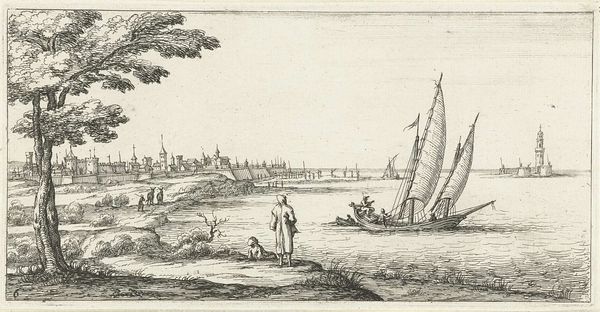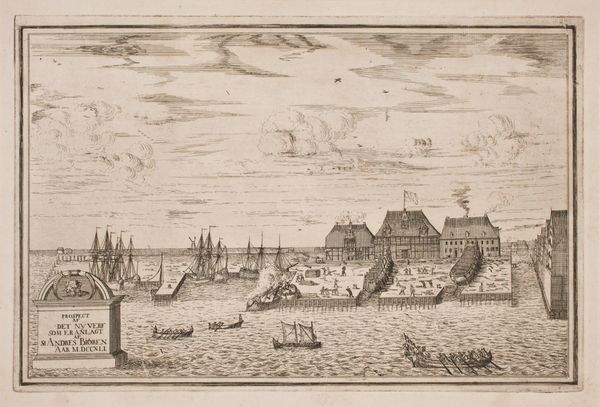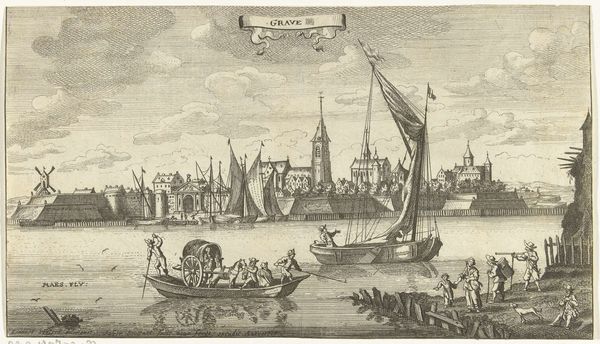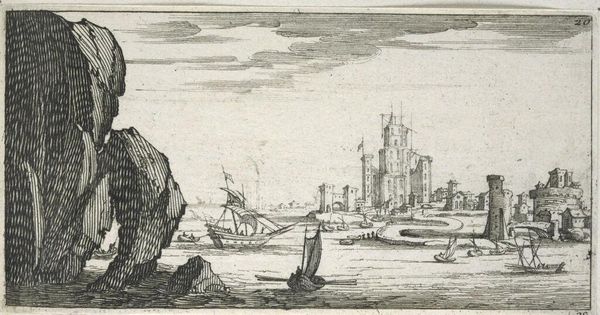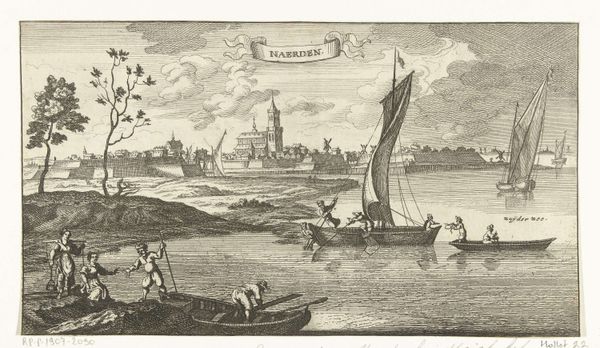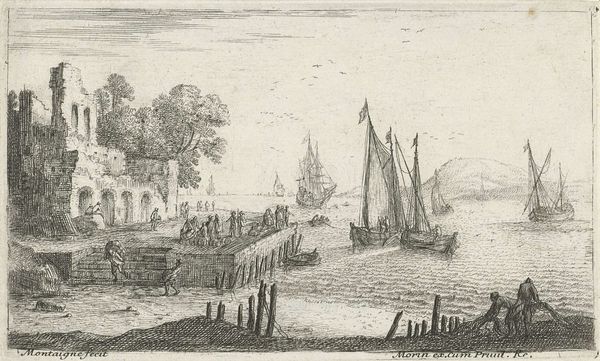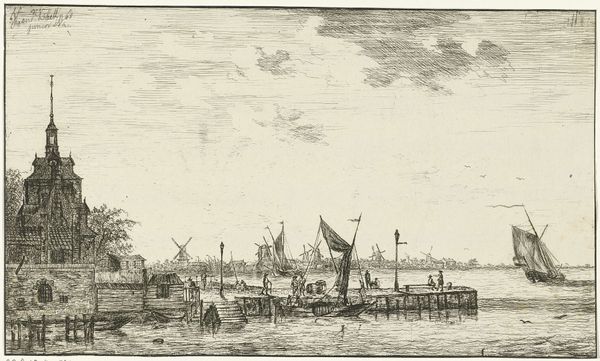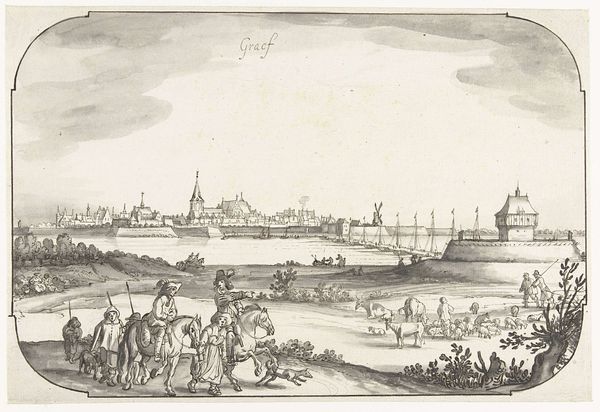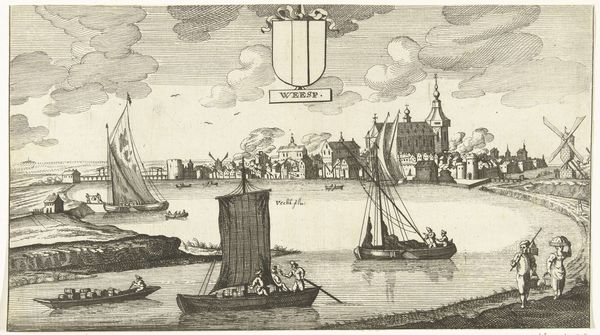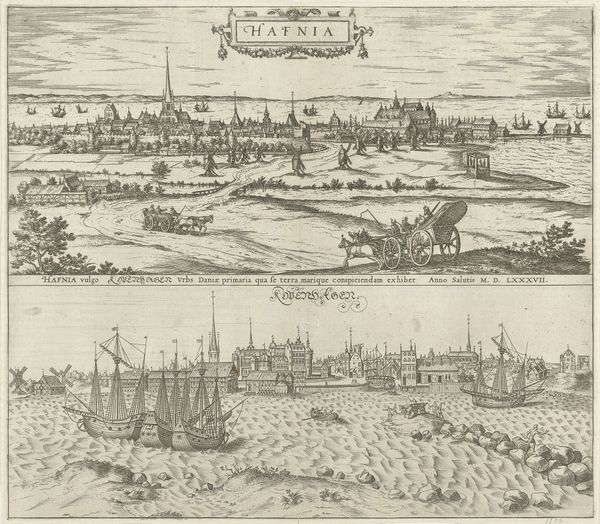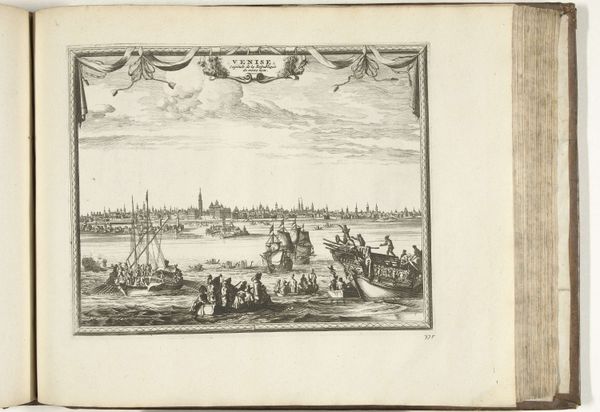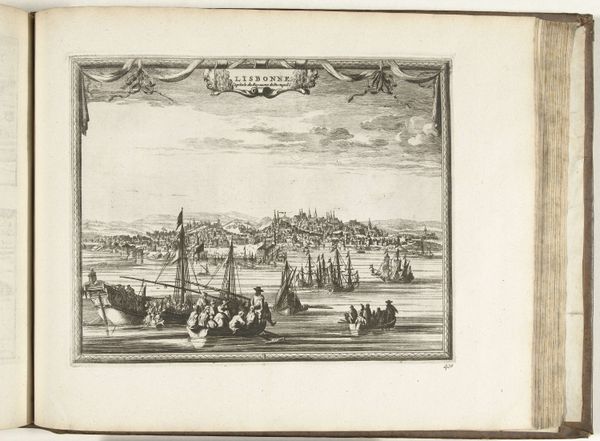
print, etching
#
dutch-golden-age
# print
#
etching
#
landscape
#
river
#
cityscape
Dimensions: height 61 mm, width 136 mm
Copyright: Rijks Museum: Open Domain
Curator: This is "Gezicht op Wageningen aan de Nederrijn" a Dutch Golden Age etching made by Wenceslaus Hollar sometime between 1625 and 1677. It depicts a view of Wageningen on the Lower Rhine River. Editor: The overall atmosphere is so still, contemplative. The delicate lines create a real sense of depth despite the limited tonal range. Curator: Exactly. As an etching, the process involves coating a metal plate with wax, scratching an image into it, and then using acid to bite into the exposed lines. The resulting incised plate holds the ink, which is then transferred to paper under pressure. This method allowed for detailed line work and the production of multiples, crucial in disseminating information in this period. How might this image have been distributed? Editor: Likely bound in atlases or sold as individual sheets. Beyond topographical interest, it reveals much about the political economy of the 17th century Netherlands. We see sailboats navigating the Rhine, facilitating trade and the movement of goods, the lifeblood of the Dutch Republic’s expansion, also these working boats show how reliant the region was on laborers. Curator: Hollar's skill is evident in the accurate rendering of the town's architecture, even down to the reflection on the water! He’s also clearly depicting daily labor and using different boats based on that labor. Editor: I see it too. Wageningen, with its recognizable skyline dominated by church spires, wasn’t just a picturesque subject; it symbolized stability and prosperity during a tumultuous time. I wonder though, to whom exactly did this vision of prosperity extend? Were its fruits distributed equally across the society being represented? Or do we miss, as modern observers, the unequal gender, social or class structures underpinning it? Curator: Your points are so critical here. Thinking about the audience and who was actually benefiting. The details we find in the landscape give us hints at these economic dynamics at play in a booming, yet fraught, social and historical time. Editor: Ultimately, an image like this acts as a portal, encouraging us to examine not just what is represented, but who benefited from that representation and whose stories are overshadowed within this seemingly calm, commercial river scene. Curator: Exactly! A detailed vista, that shows off labor, process and societal consumption within the region.
Comments
No comments
Be the first to comment and join the conversation on the ultimate creative platform.
